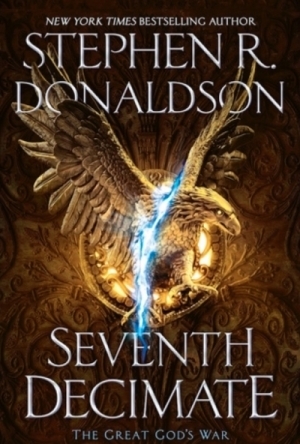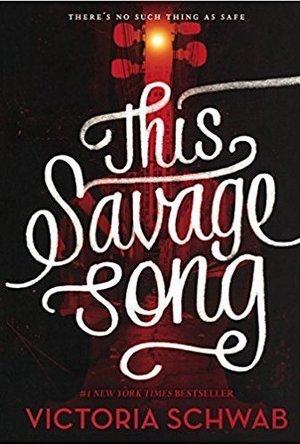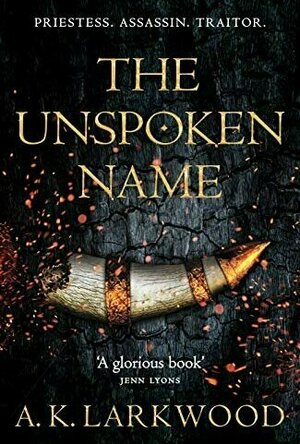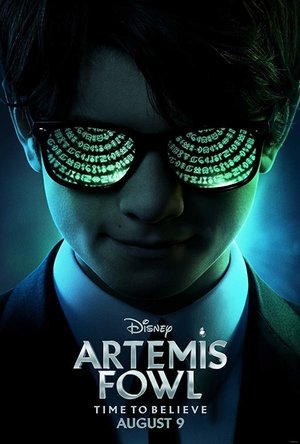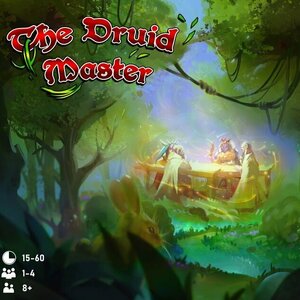Search
Ross (3284 KP) rated The Seventh Decimate : The Great Gods War Book One in Books
Jan 22, 2018
The main character (2 more)
The storyline
Everything else
1 dimensional short story that goes on too long
*** Disclosure: I received a free copy of this from NetGalley in exchange for an honest review ***
I haven't previously read any of Donaldson's work, though my Dad's unwieldy omnibus edition of the First Chronicles of Thomas Covenant the Unbeliever has been in my pile for some time now.
The storyline follows Prince Bifalt journeying to find the sorcery that can undo his country's current plight (they appear to have lost all magical abilities, key to staying in their generations old battle with neighbours). It starts off in the moments before battle, with the prince teaching his comrades about the history of the battle in a very hard to believe section of "here's the backstory but isn't it good that I wove it into the dialogue". We are introduced to his brothers at arms and each of their quirks and peccadillos, which turns out to be a waste as they pretty much all die within the next 100 pages, whether they like horses or are womanisers or not.
The opening action is very gripping and filled me with hope for the book to follow, as Bifalt and his companions lead a special mission to assassinate the enemy's sorcerers with their previously unreleased rifles.
Thereafter the action pretty much dries up. What follows on Bifalt's quest is a nonsense 200 pages of journey through the back country with a thoroughly detestable character who suspects everyone except those who actually have a reason to be his enemy.
After days in the desert, he meets a nonsensical caravan of misfits that he manages to ostracise himself from by being himself.
What follows is a tedious nonsense of journey, discussion, treachery, intrigue and just general nonsense.
Donaldson has an annoying habit of occasionally following a line of dialogue with "What he meant was" to show what the prince is actually trying to ask but didn't. This gets very annoying very quickly.
The conclusion of the story can only be described as relief that it is over, no great revelations, no climactic sequence or discovery, just "that's that sorted then now send to publishers".
Having recently read a number of fantasy books told from numerous viewpoints and covering really epic storylines, to come to such a linear, one dimensional tossed away story as this from someone who is supposed to be one of the greats of the genre, it really was an incredible disappointment.
I shan't be reading the second or third books of the trilogy, and Thomas Covenant has just slipped down my pile a bit.
I haven't previously read any of Donaldson's work, though my Dad's unwieldy omnibus edition of the First Chronicles of Thomas Covenant the Unbeliever has been in my pile for some time now.
The storyline follows Prince Bifalt journeying to find the sorcery that can undo his country's current plight (they appear to have lost all magical abilities, key to staying in their generations old battle with neighbours). It starts off in the moments before battle, with the prince teaching his comrades about the history of the battle in a very hard to believe section of "here's the backstory but isn't it good that I wove it into the dialogue". We are introduced to his brothers at arms and each of their quirks and peccadillos, which turns out to be a waste as they pretty much all die within the next 100 pages, whether they like horses or are womanisers or not.
The opening action is very gripping and filled me with hope for the book to follow, as Bifalt and his companions lead a special mission to assassinate the enemy's sorcerers with their previously unreleased rifles.
Thereafter the action pretty much dries up. What follows on Bifalt's quest is a nonsense 200 pages of journey through the back country with a thoroughly detestable character who suspects everyone except those who actually have a reason to be his enemy.
After days in the desert, he meets a nonsensical caravan of misfits that he manages to ostracise himself from by being himself.
What follows is a tedious nonsense of journey, discussion, treachery, intrigue and just general nonsense.
Donaldson has an annoying habit of occasionally following a line of dialogue with "What he meant was" to show what the prince is actually trying to ask but didn't. This gets very annoying very quickly.
The conclusion of the story can only be described as relief that it is over, no great revelations, no climactic sequence or discovery, just "that's that sorted then now send to publishers".
Having recently read a number of fantasy books told from numerous viewpoints and covering really epic storylines, to come to such a linear, one dimensional tossed away story as this from someone who is supposed to be one of the greats of the genre, it really was an incredible disappointment.
I shan't be reading the second or third books of the trilogy, and Thomas Covenant has just slipped down my pile a bit.
Kyera (8 KP) rated This Savage Song (Monsters of Verity, #1) in Books
Feb 1, 2018
The first few chapters can be a bit slow to get into, but the story does find its path fairly quickly and immediately became a favourite. I originally read the first five chapters via Epic Reads was intrigued by the premise although nothing much happened at the beginning. I finally got a chance to read the entire book and the idea of it is just fantastic. Our main characters live in a world in which sins and crimes beget monsters - creatures that terrorize the city and force the people to choose between two ways of life. In one half of the City, the leader lets the monsters roam freely but puts them under his control to a degree and sells his protection to the people for a high price. In the other half of the City, the leader has a militia-like group that keeps the City safe but not everyone wants to help out.
Our two main characters are Kate and August, although they are from opposite sides of Verity. Kate is the daughter of the leader of the north half of the City and wants to prove herself. She is strong and smart, but puts on a tougher front than she would have naturally because of who and where she is. August is different. August is a monster, a Sunai, a creature that can feed off you, your soul and your energy with just a few strains of music. But August is not all he appears and he is definitely my favourite character in the book.
There are three different types of monsters: Sunai, Malchai, and Corsai. Each is well developed and unique in the world that the author built. I think that the horror that she evokes in the reader makes the plight of the main characters that much more harrowing. You, of course, experience stress and fear as Kate and August fight for their lives. The world building continues as you experience life on each side of the city through the eyes of our main characters. I do hope to see further development in the second novel of the characters now that the foundation of the world and its players have been created.
The story was beautifully written and I was completely entranced. I was happily surprised by the lack of romance in this novel, as one could easily expect our two main characters to fall in love over the course of their harrowing journey (as happens in many YA novels.)
I would highly recommend it to young adult/teen readers who are fans of fantasy, dystopian, horror and any of V.E. Schwab's other work (despite them being in the adult age range and this being a young adult series.)
Our two main characters are Kate and August, although they are from opposite sides of Verity. Kate is the daughter of the leader of the north half of the City and wants to prove herself. She is strong and smart, but puts on a tougher front than she would have naturally because of who and where she is. August is different. August is a monster, a Sunai, a creature that can feed off you, your soul and your energy with just a few strains of music. But August is not all he appears and he is definitely my favourite character in the book.
There are three different types of monsters: Sunai, Malchai, and Corsai. Each is well developed and unique in the world that the author built. I think that the horror that she evokes in the reader makes the plight of the main characters that much more harrowing. You, of course, experience stress and fear as Kate and August fight for their lives. The world building continues as you experience life on each side of the city through the eyes of our main characters. I do hope to see further development in the second novel of the characters now that the foundation of the world and its players have been created.
The story was beautifully written and I was completely entranced. I was happily surprised by the lack of romance in this novel, as one could easily expect our two main characters to fall in love over the course of their harrowing journey (as happens in many YA novels.)
I would highly recommend it to young adult/teen readers who are fans of fantasy, dystopian, horror and any of V.E. Schwab's other work (despite them being in the adult age range and this being a young adult series.)
Ross (3284 KP) rated The Unspoken Name in Books
Mar 2, 2020
Interesting story in an unusual world
The Unspoken Name is a fantasy story in one of the most unusual settings I have come across. The world is divided into a number of different "worlds", each reached through portals. Travel between worlds requires some form of floating ship to travel through the Maze, a sort of empty dimension between worlds. And within those worlds, we have two main races (I think!), the more insular, religious sect of orcs (far more civilised than your standard orc) and the "more human" race (I picture them as human but there was something about their ears that kept being mentioned that I ended up picturing them like Thundercats!).
Csorwe, an "orc", was chosen at birth to be sacrificed to the Unspoken One on her 14th birthday, something she has come to terms with, and other than the occasional time when she is possessed by the God in order to give people visions of the future, this is her lot in life. Until that fateful day comes when she is persuaded to leave what was to become her tomb and instead to become an assistant to the powerful magician Sethannai. Meanwhile, Shuthmili is a young trainee magician looking for historical relics while waiting to be summoned to take her place in one of a number of "hive minds" and serve her country. The characters cross paths searching for the Reliquary of an infamous magician.
So much of this world was left to the reader to work out for themselves. While I am keen to visualise things for myself, here there was a little too much left to imagination. The world felt confusing at time, undefined at others, and it did impact my sense of immersion and enjoyment of the book.
The story starts strongly, with some excellent passages, followed by massive jumps in time on journeys and through the world. This was a relief for me, having been burned by a number of books that described every single step, meal and encounter ad nauseam. It really felt like the author had a desire to tell an epic story but without the need for detailed narrative, a welcome mindset.
However, this trailed off after the first third, and the pace grinded to a crawl, with every interaction taking long rambling chapters to happen.
The characters in the story are all well defined and the reader finds themselves liking/loathing them as required.
The story for me was a little all over the place. We had one overarching story but a number of mini stories in order to achieve that and I really did find myself struggling to remember who was where, doing what and why. While I did enjoy the read, the pacing issues and unclear missions hit me hard.
Csorwe, an "orc", was chosen at birth to be sacrificed to the Unspoken One on her 14th birthday, something she has come to terms with, and other than the occasional time when she is possessed by the God in order to give people visions of the future, this is her lot in life. Until that fateful day comes when she is persuaded to leave what was to become her tomb and instead to become an assistant to the powerful magician Sethannai. Meanwhile, Shuthmili is a young trainee magician looking for historical relics while waiting to be summoned to take her place in one of a number of "hive minds" and serve her country. The characters cross paths searching for the Reliquary of an infamous magician.
So much of this world was left to the reader to work out for themselves. While I am keen to visualise things for myself, here there was a little too much left to imagination. The world felt confusing at time, undefined at others, and it did impact my sense of immersion and enjoyment of the book.
The story starts strongly, with some excellent passages, followed by massive jumps in time on journeys and through the world. This was a relief for me, having been burned by a number of books that described every single step, meal and encounter ad nauseam. It really felt like the author had a desire to tell an epic story but without the need for detailed narrative, a welcome mindset.
However, this trailed off after the first third, and the pace grinded to a crawl, with every interaction taking long rambling chapters to happen.
The characters in the story are all well defined and the reader finds themselves liking/loathing them as required.
The story for me was a little all over the place. We had one overarching story but a number of mini stories in order to achieve that and I really did find myself struggling to remember who was where, doing what and why. While I did enjoy the read, the pacing issues and unclear missions hit me hard.
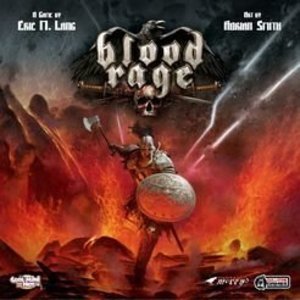
Blood Rage
Tabletop Game
"Life is Battle; Battle is Glory; Glory is ALL" In Blood Rage, each player controls their own...
Miniatures BoardGameGeekGreatness
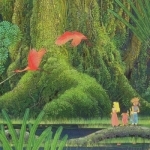
Secret of Mana
Games
App
--- July 18, 2014 Gamepad support has been added. --- Initially released in Japan in 1993, Secret of...
Tyler Fletcher (8 KP) rated Artemis Fowl (2020) in Movies
Jun 14, 2020
Character development (1 more)
Forgettable story
Another Live-Action Disney Adaption Bomb
Contains spoilers, click to show
What is it about fantasy novels that makes them so difficult to translate effectively to the silver screen? It’s not impossible – J.K. Rowling’s Harry Potter series and Peter Jackson’s The Lord of the Rings adaptations are proof that it can be done. More often than not, however, the result is as limp and truncated as Kenneth Branagh’s Artemis Fowl – a few standout moments set adrift in a sea of underdeveloped characters, incomplete backstory elements, and abbreviated world building. Although the problem lies primarily in the difficulties associated with condensing an epic tale into a short-ish movie, the lack of elegance with which that is accomplished makes Artemis Fowl a failure for anyone hoping for the next great fantasy film.
The treatment accorded to Artemis Fowl (the movie condenses elements from the first two volumes of an eight-novel cycle into a single film) recalls a Disney misfire from more than three decades ago. Although The Black Cauldron was animated, it suffered from many of the same problems evident in Artemis Fowl: an oversimplification of the backstory, a rushed narrative with poorly realized characters, and a overall lack of faithfulness to the source material. The Black Cauldron worked better because it at least had a clean ending. Artemis Fowl suffers by trying to both provide a credible stopping point (in case there are no additional films) and offering a lead-in to additional adventures (in case there are additional films).
In the books, 12-year old Artemis (played by Ferdia Shaw, the grandson of Robert Shaw) is presented as an anti-hero (although, over the course of the saga, his villainous attributes fade to be replaced by heroic ones). Here, he’s more of a misunderstood boy-genius whose role as the protagonist is never in question. All of his edges have been smoothed out. The story focuses on Artemis’ efforts to locate and rescue his father, Artemis Fowl Sr. (Colin Farrell), an infamous art thief who has been kidnapped by the twisted evil fairy Opal Koboi. Her ransom for releasing him is that Artemis must locate and obtain a powerful McGuffin. He is joined in his efforts by Lower Elements Police (LEP) fairy police officer Holly Short (Lara McDonnell), giant dwarf Mulch Diggums (Josh Gad), and strongman Domovoi Butler (Nonso Anozie).
Artemis Fowl diverges considerably from the two books that form its basis, Artemis Fowl and Artemis Fowl and the Arctic Incident. Although author Eoin Colfer reportedly “approved” the changes, they push the film into an alternate universe from the one occupied by the novels. Even with the pruning of subplots and condensation of the narrative, 100 minutes is too short to tell the story effectively. None of the characters are well-developed, including Artemis. The boy’s relationship with Holly Short evolves with whiplash-inducing rapidity – one moment, they’re enemies (actually, she’s his prisoner), the next they’re friends. The film’s frenetic pace might work for ADD viewers and preteens but there’s no time for world-building or anything more than the most basic exposition. As a result, Artemis Fowl feels rushed to the point of being exhausting and strangely confusing despite the relatively straightforward storyline.
Kenneth Branagh was undoubtedly selected to direct the film based on his success with two earlier Disney properties: the live-action Cinderella and Marvel’s Thor. Perhaps because Branagh had no input into the screenplay (which was completed before he came on board), the movie lacks the complex psychological qualities he normally brings to his films. Visually, Artemis Fowl is impressive. However, although the fairy world of Haven is beautifully rendered, it appears all-too-briefly. The film’s most impressive sequence, a throwdown with a seemingly invincible troll, is a standout by any definition, but it represents only about five minutes of screen time and there’s nothing else that comes close – not even the muted climax.
As is often the case, Branagh’s presence at the top results in some impressive names in the cast. The young leads are newcomers – this is Ferdia Shaw’s first movie (and it shows – his performance is occasionally wooden) and Lara McDonnell’s third (she’s better, evidencing an indomitable pluckiness) – but the rest of the cast is populated with veterans. Josh Gad, another Disney regular, has the most openly comedic role of the film as Mulch Diggums. Colin Farrell is called on for limited duty as Artemis’ mostly-absent father. Nonso Anozie, who has a history with Branagh, plays Artemis’ protector and advisor. Finally, Judi Dench adds a dose of class as Holly’s no-nonsense boss.
It has taken Artemis Fowl nearly 20 years to traverse the route from page to screen and one senses that neither fans nor newcomers will be especially pleased with the end result. Recognizing that the film faced rough seas, Disney postponed the movie’s originally planned August 2019 release to May 2020 then, when the coronavirus made that impossible, the studio elected to shift the film to its Disney+ platform. Although partially a face-saving gesture (Artemis Fowl would likely have had a similar box office reception to Disney’s underwhelming 2018 release, The Nutcracker and the Four Realms), it at least allows the film to find a large audience in a low-pressure situation.
The bottom line seems to be that, while Disney has shown an aptitude for making many different kinds of movies, fantasy epics aren’t among them. This is one genre the Magic Kingdom should perhaps avoid, leaving such properties to studios that have shown better success (such as Warner Brothers). Artemis Fowl could have been the beginning of a movie franchise but, based on the first installment, it’s more likely a one-and-done outing. Disney can't quite get away from the John Carters can they?
THIS FILM IS AN EXCEPTIONAL BOMB
The treatment accorded to Artemis Fowl (the movie condenses elements from the first two volumes of an eight-novel cycle into a single film) recalls a Disney misfire from more than three decades ago. Although The Black Cauldron was animated, it suffered from many of the same problems evident in Artemis Fowl: an oversimplification of the backstory, a rushed narrative with poorly realized characters, and a overall lack of faithfulness to the source material. The Black Cauldron worked better because it at least had a clean ending. Artemis Fowl suffers by trying to both provide a credible stopping point (in case there are no additional films) and offering a lead-in to additional adventures (in case there are additional films).
In the books, 12-year old Artemis (played by Ferdia Shaw, the grandson of Robert Shaw) is presented as an anti-hero (although, over the course of the saga, his villainous attributes fade to be replaced by heroic ones). Here, he’s more of a misunderstood boy-genius whose role as the protagonist is never in question. All of his edges have been smoothed out. The story focuses on Artemis’ efforts to locate and rescue his father, Artemis Fowl Sr. (Colin Farrell), an infamous art thief who has been kidnapped by the twisted evil fairy Opal Koboi. Her ransom for releasing him is that Artemis must locate and obtain a powerful McGuffin. He is joined in his efforts by Lower Elements Police (LEP) fairy police officer Holly Short (Lara McDonnell), giant dwarf Mulch Diggums (Josh Gad), and strongman Domovoi Butler (Nonso Anozie).
Artemis Fowl diverges considerably from the two books that form its basis, Artemis Fowl and Artemis Fowl and the Arctic Incident. Although author Eoin Colfer reportedly “approved” the changes, they push the film into an alternate universe from the one occupied by the novels. Even with the pruning of subplots and condensation of the narrative, 100 minutes is too short to tell the story effectively. None of the characters are well-developed, including Artemis. The boy’s relationship with Holly Short evolves with whiplash-inducing rapidity – one moment, they’re enemies (actually, she’s his prisoner), the next they’re friends. The film’s frenetic pace might work for ADD viewers and preteens but there’s no time for world-building or anything more than the most basic exposition. As a result, Artemis Fowl feels rushed to the point of being exhausting and strangely confusing despite the relatively straightforward storyline.
Kenneth Branagh was undoubtedly selected to direct the film based on his success with two earlier Disney properties: the live-action Cinderella and Marvel’s Thor. Perhaps because Branagh had no input into the screenplay (which was completed before he came on board), the movie lacks the complex psychological qualities he normally brings to his films. Visually, Artemis Fowl is impressive. However, although the fairy world of Haven is beautifully rendered, it appears all-too-briefly. The film’s most impressive sequence, a throwdown with a seemingly invincible troll, is a standout by any definition, but it represents only about five minutes of screen time and there’s nothing else that comes close – not even the muted climax.
As is often the case, Branagh’s presence at the top results in some impressive names in the cast. The young leads are newcomers – this is Ferdia Shaw’s first movie (and it shows – his performance is occasionally wooden) and Lara McDonnell’s third (she’s better, evidencing an indomitable pluckiness) – but the rest of the cast is populated with veterans. Josh Gad, another Disney regular, has the most openly comedic role of the film as Mulch Diggums. Colin Farrell is called on for limited duty as Artemis’ mostly-absent father. Nonso Anozie, who has a history with Branagh, plays Artemis’ protector and advisor. Finally, Judi Dench adds a dose of class as Holly’s no-nonsense boss.
It has taken Artemis Fowl nearly 20 years to traverse the route from page to screen and one senses that neither fans nor newcomers will be especially pleased with the end result. Recognizing that the film faced rough seas, Disney postponed the movie’s originally planned August 2019 release to May 2020 then, when the coronavirus made that impossible, the studio elected to shift the film to its Disney+ platform. Although partially a face-saving gesture (Artemis Fowl would likely have had a similar box office reception to Disney’s underwhelming 2018 release, The Nutcracker and the Four Realms), it at least allows the film to find a large audience in a low-pressure situation.
The bottom line seems to be that, while Disney has shown an aptitude for making many different kinds of movies, fantasy epics aren’t among them. This is one genre the Magic Kingdom should perhaps avoid, leaving such properties to studios that have shown better success (such as Warner Brothers). Artemis Fowl could have been the beginning of a movie franchise but, based on the first installment, it’s more likely a one-and-done outing. Disney can't quite get away from the John Carters can they?
THIS FILM IS AN EXCEPTIONAL BOMB
Alice (12 KP) rated The Ninth Rain in Books
Jul 3, 2018
<i>I was given a copy of this book by the publisher in exchange for an honest review</i>
The Ninth Rain is the first book of a new trilogy from my new go-to author Jen Williams. As in her previous books, Jen Williams creates a world like no other, a world where witches, vampires (of a sort) and giant bats coexist to an extent; a world where gods existed and massive war-beasts once lived and fought, where parasitic beetles are the enemy.
I invite you all to most heartily buy this book, read this book, pause and read it again and again.
Once again Jen Williams has created a trio of characters to love in similar veins to her Copper Cat trilogy, though different in their individual way:
-Noon – a fell-witch from the plains imprisoned in the Winnowry for her crime of being born with power.
-Lady Vincenza ‘Vintage’ de Grazon – A human scholar with a love of all things Jure’lia, a constant hunt for knowledge and cash to splash.
-Tormalin the Oathless – an Eboran mercenary trained in the ways of The House of the Long Night.
Three brilliant characters that each bring their own special flair to this book. Tor is witty and sarcastic, Vintage is much the same but show her eccentricities and has a heart of gold, Noon originally so frightened comes into her own on the journey she shares with Vintage and Tor. Another perfect trio of characters.
The plot for this book resolves around the Jure’lia- or worm-people- who came to Sarn and waged war; the Eighth Rain came from the Eboran God Ygseril, a silvery birth of war-beasts who fought off the Jure’lia and their Behemoths and then passed on themselves. Since the end of the Eighth Rain the war-beasts have been extinct and Ebora started to die.
The book follows Vintage and Tor on their journey through Mushenka and the rest of Sarn in pursuit of knowledge of the Jure’lia- eccentric explorer Vintage’s Poison of choice. They enter the Wild and come across Noon, an escaped fell-witch masquerading as an agent of the Winnowry and from then on their journey becomes a lot less regular and and lot more interesting!
Lots of fire! Lots of action and the sweetest romantic creation I’ve read in a long time – a minor bit of romance that does not detract from the overwhelming fantasy that is this book.
Jen’s world building skills are akin to no other, her cities are ancient but with a modern flair, her enemies disgustingly brilliant and savagely evil, her heroes full of charm and heart. The writing style sucks you in and doesn’t let you go until long after you’ve hit the end of the book and leaves you wanting more.
There are no words strong enough for me to describe how utterly brilliant The Ninth Rain was – not just the story the name comes from but the overall storyline. The characters, plot, balance between good versus evil and everything in between – outstanding.
A great read with heart and soul and epic beasties. I highly recommend this book.
The Ninth Rain is the first book of a new trilogy from my new go-to author Jen Williams. As in her previous books, Jen Williams creates a world like no other, a world where witches, vampires (of a sort) and giant bats coexist to an extent; a world where gods existed and massive war-beasts once lived and fought, where parasitic beetles are the enemy.
I invite you all to most heartily buy this book, read this book, pause and read it again and again.
Once again Jen Williams has created a trio of characters to love in similar veins to her Copper Cat trilogy, though different in their individual way:
-Noon – a fell-witch from the plains imprisoned in the Winnowry for her crime of being born with power.
-Lady Vincenza ‘Vintage’ de Grazon – A human scholar with a love of all things Jure’lia, a constant hunt for knowledge and cash to splash.
-Tormalin the Oathless – an Eboran mercenary trained in the ways of The House of the Long Night.
Three brilliant characters that each bring their own special flair to this book. Tor is witty and sarcastic, Vintage is much the same but show her eccentricities and has a heart of gold, Noon originally so frightened comes into her own on the journey she shares with Vintage and Tor. Another perfect trio of characters.
The plot for this book resolves around the Jure’lia- or worm-people- who came to Sarn and waged war; the Eighth Rain came from the Eboran God Ygseril, a silvery birth of war-beasts who fought off the Jure’lia and their Behemoths and then passed on themselves. Since the end of the Eighth Rain the war-beasts have been extinct and Ebora started to die.
The book follows Vintage and Tor on their journey through Mushenka and the rest of Sarn in pursuit of knowledge of the Jure’lia- eccentric explorer Vintage’s Poison of choice. They enter the Wild and come across Noon, an escaped fell-witch masquerading as an agent of the Winnowry and from then on their journey becomes a lot less regular and and lot more interesting!
Lots of fire! Lots of action and the sweetest romantic creation I’ve read in a long time – a minor bit of romance that does not detract from the overwhelming fantasy that is this book.
Jen’s world building skills are akin to no other, her cities are ancient but with a modern flair, her enemies disgustingly brilliant and savagely evil, her heroes full of charm and heart. The writing style sucks you in and doesn’t let you go until long after you’ve hit the end of the book and leaves you wanting more.
There are no words strong enough for me to describe how utterly brilliant The Ninth Rain was – not just the story the name comes from but the overall storyline. The characters, plot, balance between good versus evil and everything in between – outstanding.
A great read with heart and soul and epic beasties. I highly recommend this book.
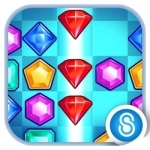
Jewel Mania™
Games and Entertainment
App
Jewel Mania - The new match 3 sensation is here, with brilliant jewels in over 600 dazzling puzzles!...
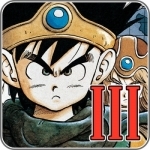
DRAGON QUEST III
Games
App
DRAGON QUEST III: The Seeds of Salvation—one of the most highly acclaimed and best-selling games...
Purple Phoenix Games (2266 KP) rated The Druid Master in Tabletop Games
Jun 2, 2021
When it comes to fantasy worlds, I often think of powerful parties going on epic adventures – fighting monsters, delving through dungeons, and saving the world! But what about when the adventure is over and the party comes home? What do they do in their day-to-day lives? Well, The Druid Master helps give us a glimpse into the regular life of a Druid. Being the local healer might not always be glamorous, but hey, it’s a living!
Disclaimer: We were provided a PnP of The Druid Master for the purposes of this preview. The artwork and design of the cards is not yet finalized, so what you see pictured below is not necessarily what the production copies will look like. It is also important to note that although the game is about natural medicines/remedies, it does not replace professional medical advice and treatments. -L
In The Druid Master, players will take on the roles of (you guessed it) Druids who have mastered the ancient arts of healing, through use of plants, herbs, and other natural elements. Ailing patients will come to you (and your rivals) for help, so you must work quickly to concoct the most effective remedy to heal them back to normal! To setup for a game, each player receives a Player Screen, 1 Effect card, and 7 Plant cards. The remaining Effect and Plant cards are shuffled to form draw decks, and the Event deck is placed nearby as well. Place the deck of Patient cards facedown within reach of all players, and set the Cure tokens to the side. The game is now ready to begin!
Over the course of 8 rounds, players will be using Plant and Effect cards to best help the ailing Patient for each given round. Once the 8th and final Patient card has been resolved, points will be counted to determine the ultimate Druid Master! To start a round, an Event card will be revealed. These Events will alter the round in some way, putting your strategic thinking to the test. For example, an Event card might limit the number of cards you can play this round. After the Event is resolved, the Patient card will be revealed for all players to see. The Patient will have a list of symptoms/ailments, with a percentage corresponding to the severity of the issue. Each player will then secretly select 1-3 Plant cards from their hand to be used to heal the Patient. The different Plant cards offer remedies for the various symptoms/ailments, and also list a corresponding percentage as to how much it will help. Effect cards can also be used during this phase of the game to obtain bonuses/negatively affect opponents. Use them wisely!
Once everyone is ready, all Plant cards will be revealed, and players will determine who has best cured the Patient. Compare the percentages on your Plant cards against those of the Patient – if you have failed to completely cure a symptom, take a Cure token that represents the missing percentages from your played cure. When all Plant cards have been checked, the player that was able to Cure the Patient completely (was able to match all Patient percentages with their played Plant cards) is the winner of the round. They will take the Patient card for end-game scoring. If nobody completely Cured the Patient, the player who accumulated the least number of Cure tokens (thus curing the most Patient percentages of the group) wins the round and collects the Patient card. All Plant and Effect cards used this round are discarded, and each player will draw 2 new Plant cards for the next round. Play continues in this fashion until the 8th Patient has been Cured. Players will count up their points earned from Cured Patients, and the player with the highest score is named the winning Druid Master!
I should say right off the bat that I’m not really a person who is into natural medicine. But my personal preferences do not stop me from playing and enjoying The Druid Master. If you think about it, natural medicine is very thematically appropriate for fantasy worlds, so it makes sense in this setting. Ok, so what about the gameplay? It is very straight-forward, which lends itself to fast teaching, learning, and playing. Ultimately, you are trying to match your Plant cards as best you can to the Patient card in play. And since you can only play a maximum of 3 cards each round, you really have to consider your options. If you aren’t able to completely Cure the Patient, can you play your Plant cards in such a way that you will collect the fewest Cure tokens? It’s all about how you strategize. Another thing that I really like about the gameplay is that all Plant cards are selected secretly and revealed simultaneously. So nobody is at an advantage by being able to see that an opponent was not 100% successful. It adds a little element of risk and hidden information to the game that makes it more engaging.
As I mentioned earlier, this is a PnP version of the game, so these components are not what will be received in a production copy. Also, the card layouts and artwork are not completely finalized either. But going on what I have, I do like the simplicity of the components. The symbolism is clear, the percentages are easy to read, and the text/pictures are informational as well. Once this game is printed on real cards and with cardboard tokens, I know it will be a decent quality production.
So overall, how does The Druid Master fare? I’d say fairly well. The rules and gameplay are straight-forward, it is fast and easy to teach and play, and it keeps all players engaged throughout the entire game. This is certainly not the most complicated or heavy game in existence, but it does offer hints of strategy that will keep the gameplay fresh and players invested. If you are looking for a nice little filler-type game set in a fantasy realm, I would recommend checking out The Druid Master. It is coming to Kickstarter soon, so be on the lookout!
Disclaimer: We were provided a PnP of The Druid Master for the purposes of this preview. The artwork and design of the cards is not yet finalized, so what you see pictured below is not necessarily what the production copies will look like. It is also important to note that although the game is about natural medicines/remedies, it does not replace professional medical advice and treatments. -L
In The Druid Master, players will take on the roles of (you guessed it) Druids who have mastered the ancient arts of healing, through use of plants, herbs, and other natural elements. Ailing patients will come to you (and your rivals) for help, so you must work quickly to concoct the most effective remedy to heal them back to normal! To setup for a game, each player receives a Player Screen, 1 Effect card, and 7 Plant cards. The remaining Effect and Plant cards are shuffled to form draw decks, and the Event deck is placed nearby as well. Place the deck of Patient cards facedown within reach of all players, and set the Cure tokens to the side. The game is now ready to begin!
Over the course of 8 rounds, players will be using Plant and Effect cards to best help the ailing Patient for each given round. Once the 8th and final Patient card has been resolved, points will be counted to determine the ultimate Druid Master! To start a round, an Event card will be revealed. These Events will alter the round in some way, putting your strategic thinking to the test. For example, an Event card might limit the number of cards you can play this round. After the Event is resolved, the Patient card will be revealed for all players to see. The Patient will have a list of symptoms/ailments, with a percentage corresponding to the severity of the issue. Each player will then secretly select 1-3 Plant cards from their hand to be used to heal the Patient. The different Plant cards offer remedies for the various symptoms/ailments, and also list a corresponding percentage as to how much it will help. Effect cards can also be used during this phase of the game to obtain bonuses/negatively affect opponents. Use them wisely!
Once everyone is ready, all Plant cards will be revealed, and players will determine who has best cured the Patient. Compare the percentages on your Plant cards against those of the Patient – if you have failed to completely cure a symptom, take a Cure token that represents the missing percentages from your played cure. When all Plant cards have been checked, the player that was able to Cure the Patient completely (was able to match all Patient percentages with their played Plant cards) is the winner of the round. They will take the Patient card for end-game scoring. If nobody completely Cured the Patient, the player who accumulated the least number of Cure tokens (thus curing the most Patient percentages of the group) wins the round and collects the Patient card. All Plant and Effect cards used this round are discarded, and each player will draw 2 new Plant cards for the next round. Play continues in this fashion until the 8th Patient has been Cured. Players will count up their points earned from Cured Patients, and the player with the highest score is named the winning Druid Master!
I should say right off the bat that I’m not really a person who is into natural medicine. But my personal preferences do not stop me from playing and enjoying The Druid Master. If you think about it, natural medicine is very thematically appropriate for fantasy worlds, so it makes sense in this setting. Ok, so what about the gameplay? It is very straight-forward, which lends itself to fast teaching, learning, and playing. Ultimately, you are trying to match your Plant cards as best you can to the Patient card in play. And since you can only play a maximum of 3 cards each round, you really have to consider your options. If you aren’t able to completely Cure the Patient, can you play your Plant cards in such a way that you will collect the fewest Cure tokens? It’s all about how you strategize. Another thing that I really like about the gameplay is that all Plant cards are selected secretly and revealed simultaneously. So nobody is at an advantage by being able to see that an opponent was not 100% successful. It adds a little element of risk and hidden information to the game that makes it more engaging.
As I mentioned earlier, this is a PnP version of the game, so these components are not what will be received in a production copy. Also, the card layouts and artwork are not completely finalized either. But going on what I have, I do like the simplicity of the components. The symbolism is clear, the percentages are easy to read, and the text/pictures are informational as well. Once this game is printed on real cards and with cardboard tokens, I know it will be a decent quality production.
So overall, how does The Druid Master fare? I’d say fairly well. The rules and gameplay are straight-forward, it is fast and easy to teach and play, and it keeps all players engaged throughout the entire game. This is certainly not the most complicated or heavy game in existence, but it does offer hints of strategy that will keep the gameplay fresh and players invested. If you are looking for a nice little filler-type game set in a fantasy realm, I would recommend checking out The Druid Master. It is coming to Kickstarter soon, so be on the lookout!
